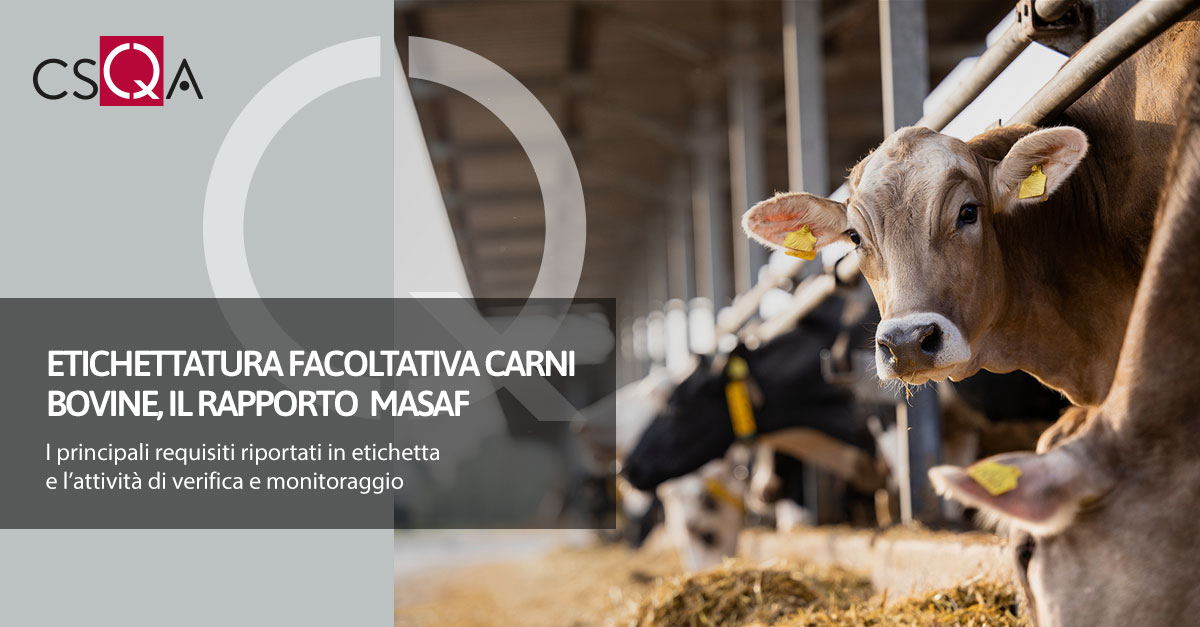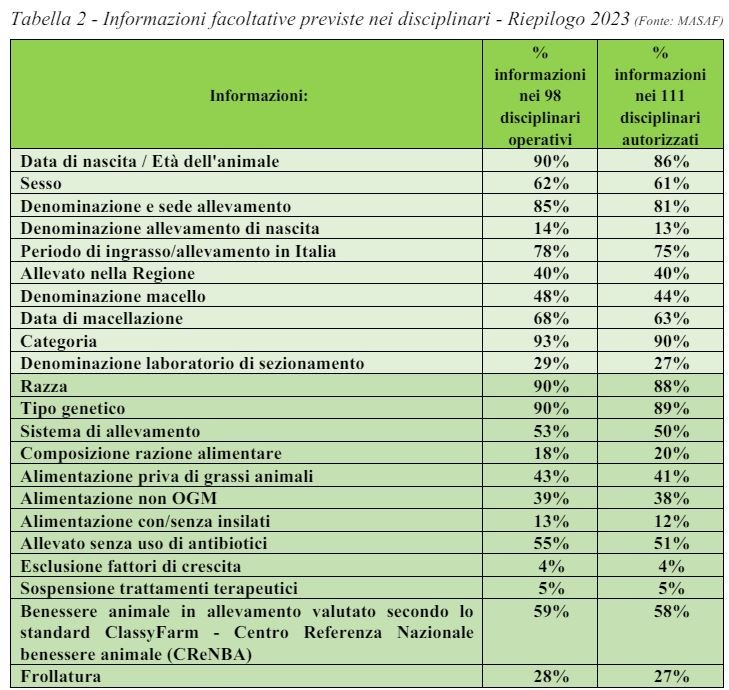 Masaf has published the "21st Monitoring Report on optional beef labeling" relating to the year 2023, which illustrates the diffusion of the specifications and Control Bodies at national level, the main requirements currently reported on the label as well as the activity verification and monitoring carried out on the system with the main findings that emerged.
Masaf has published the "21st Monitoring Report on optional beef labeling" relating to the year 2023, which illustrates the diffusion of the specifications and Control Bodies at national level, the main requirements currently reported on the label as well as the activity verification and monitoring carried out on the system with the main findings that emerged.
Premise
The process of restructuring and redevelopment of the beef sector , initiated by the European Community following the BSE crisis of 1996 and subsequently of 2000, inaugurated, at a national and supranational level, a course of reforms aimed at stabilizing and relaunching the beef market. beef, seeking to improve consumer confidence in products of bovine origin.
At a national level , the key points for proceeding in this direction have been identified in the concepts of quality improvement and promotion of the national product.
All this takes shape in the creation of a guarantee system that involves all the operators of the different segments of the supply chain with the aim of:
-
increase the commercial power of the primary sector;
-
lay the foundations for greater added value ;
-
allow the traceability of the raw material and the production process;
-
guarantee the recognisability of the product by the consumer.
Operators in possession of specifications
There have been 222 beef labeling specifications approved or filed with MASAF since the introduction of a specific regulation way back in 1997 and in the same period 96 specifications were revoked. As of 31 December 2023, there were 111 authorized regulations, of which 11 were inoperative, 2 were self-suspended and 112 were revoked (six more than in 2022).
The analysis of the contents of the specifications highlights significant trends which, overall, see a growing attention by the organizations responsible for labelling, to the provision of specific information relating to the different moments of the production process.
Analysis of optional information
The requirements present in the regulations have been summarized in the following table which reports the percentage of each information present in those authorized and those actually operational:

The new information introduced since 2016 relating to animal welfare and the lack of use of antibiotics in farming continues to affect the beef supply chain.
This latter information, initially limited to the last 4 months of breeding, is starting to be guaranteed for decidedly longer periods.
Some organizations have introduced information on the non-use of antibiotics on farms from birth (conventionally excluding the first 45 days of the calf's life where it receives exclusively milk) or from the weaning of the calf which in beef cattle farming is expected within a maximum of 6 – 8 months from birth and in some situations up to a maximum of 12 months.
In the latter case, these are animals that are born in Italy and remain under the mother, on the breeding farm or in the pastures, feeding on breast milk and/or reconstituted milk and solids for up to a maximum of 12 months before being sent to breeding. only solid feeding in collection centers and fattening farms.
This type of farming is characteristic of some areas of southern Italy, Sardinia, some areas of Sicily, but also of Alto Adige, the Tuscan Apennines and Piedmont (in the case of Piedmontese cattle breeding).
Closed cycle breeding (cow-calf line) is also included in this case study.
This information meets the need of an increasingly wider range of consumers for information on the welfare of animals and the ways in which they are raised, as highlighted by both national and community consultations.
Precisely following a Eurobarometer survey28 , many organizations have filed specifications that provide procedures to guarantee the traceability and truthfulness of this information. Among these, the first information included in the specifications is that relating to animal welfare.
Conclusions
The report then continues by illustrating the activity carried out by the Independent Control Bodies , the main non-conformities found by segment of the supply chain, as well as the costs of the entire system .
The 2023 report offers us an in-depth look at the diffusion of specifications and control bodies at a national level. This valuable investigation highlights the growing importance of ensuring detailed information regarding the origin and breeding practices of animals intended for beef production. (Source: Giulia Spadafora, https://www.ruminantia.it/ )
LEARN MORE ABOUT REGULATION 1760/00